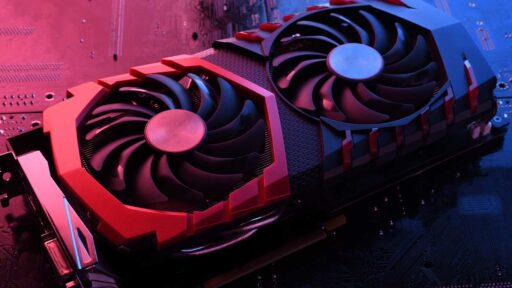Cryptocurrency mining has become a popular way to potentially earn passive income, but it’s crucial to estimate your earnings accurately to ensure profitability. A crypto mining calculator for GPUs is a vital tool for anyone looking to dive into GPU mining. This article will guide you through the process of using a mining calculator to estimate your potential earnings, taking into account hardware costs, electricity expenses, and market conditions. We’ll also explore how to optimize your mining setup and adapt your strategies in a constantly evolving market.
Key Takeaways
- A crypto mining calculator helps estimate potential earnings from GPU mining, factoring in hardware costs, electricity rates, and market conditions.
- Understanding hardware efficiency, electricity costs, and mining rewards is essential for accurate profitability calculations.
- Inputting accurate hardware specifications and adjusting for electricity rates are key steps in setting up your mining calculator.
- Analyzing calculator results involves interpreting estimated earnings, considering market fluctuations, and assessing long-term profitability.
- Optimizing your mining setup and staying informed about mining trends are crucial for maintaining and improving mining profitability.
Understanding GPU Mining Profitability

The Role of Hardware in Mining Efficiency
The efficiency of cryptocurrency mining is heavily influenced by the hardware utilized. GPUs are the cornerstone of mining operations, especially for cryptocurrencies that use the Proof of Work (PoW) algorithm. These GPUs must possess significant memory and processing capabilities to mine effectively. While CPUs are involved, they mainly support system operations and interface with mining software.
Mining technology is rapidly evolving, with advancements leading to more powerful and energy-efficient hardware. This progress is essential for miners looking to enhance their operations’ efficiency and profitability. The shift towards sustainable mining practices also influences hardware choices, as energy consumption becomes a critical factor.
The choice of hardware is a pivotal decision for miners, as it directly affects the potential earnings and longevity of the mining setup.
For Bitcoin mining, which relies on PoW, the increasing complexity of mining puzzles has led to the need for specialized ASICs. However, these are often expensive and less accessible to individual miners. In contrast, GPU mining remains more versatile and widely applicable across various cryptocurrencies.
Here’s a quick overview of the types of hardware commonly used in mining:
- GPUs (Graphics Processing Units): The primary choice for mining, offering a balance of power and efficiency.
- CPUs (Central Processing Units): Play a supporting role in system management and software communication.
- ASICs (Application-Specific Integrated Circuits): Highly efficient for specific cryptocurrencies like Bitcoin, but with limited flexibility and higher costs.
Assessing Electricity Costs for Optimal Mining
To ensure the profitability of GPU mining, it’s crucial to assess the electricity costs involved in running your mining rigs. These costs can significantly impact your bottom line, as mining requires continuous power for both computation and cooling systems. High electricity rates can quickly erode potential earnings, making it essential to calculate these expenses accurately.
Electricity costs are not just about the power draw of your GPUs; they also include the cooling required to maintain optimal operating temperatures. This can add a substantial amount to your overall expenses.
Here’s a simple breakdown of the factors to consider when estimating electricity costs:
- Power consumption: Measure the wattage used by your mining hardware.
- Electricity rates: Check your local electricity prices per kilowatt-hour (kWh).
- Cooling expenses: Include the cost of air conditioning or other cooling solutions.
By carefully evaluating these factors, miners can identify the most cost-effective setup and adjust their mining strategy accordingly.
Evaluating Mining Rewards and Fees
When venturing into GPU mining, it’s crucial to evaluate the potential rewards and fees associated with the cryptocurrency you aim to mine. Mining rewards are the incentives miners receive for their computational efforts in validating transactions and securing the blockchain. These rewards consist of block rewards and transaction fees. Block rewards are given for discovering new blocks, while transaction fees are collected from the transactions included in a block.
To accurately assess your earnings, consider the following factors:
- Current block rewards and transaction fees for your chosen cryptocurrency.
- Fees charged by the mining pool, which can include pool fees, payout fees, or withdrawal fees.
- The payment methods offered by the mining pool, such as pay-per-share (PPS), proportional, or merged mining.
Remember, the profitability of mining is not static and can change with market conditions, such as fluctuations in cryptocurrency prices and mining difficulty.
It’s also important to monitor changes in mining difficulty and network hash rate, as these can significantly impact your mining rewards. A higher network hash rate means more competition for block rewards, potentially reducing individual earnings. Always ensure that the rewards justify the costs involved, including electricity and hardware expenses.
Setting Up Your Crypto Mining Calculator

Inputting Hardware Specifications
To accurately estimate your earnings with a crypto mining calculator, the first step is to input your hardware specifications. This includes the make and model of your GPU, its hash rate, power consumption, and any other relevant performance metrics. For instance, if you’re using an Nvidia or AMD GPU, you’ll need to know the specific model, such as the RX 5700 or the GTX 1080 Ti.
Here’s an example of how to structure this information in a table:
| GPU Model | Hash Rate (MH/s) | Power Consumption (W) |
|---|---|---|
| RX 5700 | 44 | 225 |
| GTX 1080 Ti | 35 | 250 |
Remember, the more accurate the information you provide, the more reliable your estimated earnings will be. It’s essential to verify the hash rate and power consumption for your specific GPU model, as these can vary even within the same product line.
Once you’ve gathered all the necessary data, enter it into the mining calculator. Many calculators, like Minerstat, offer a user-friendly interface where you can select your hardware from a dropdown list or input custom values. This step is crucial for assessing your potential profitability and making informed decisions about your mining operations.
Adjusting for Electricity Rates and Costs
When configuring your crypto mining calculator, adjusting for electricity rates and costs is crucial for an accurate profitability estimate. Electricity is a significant ongoing expense in mining operations, powering the GPUs and cooling systems necessary to maintain optimal performance.
To accurately account for these costs, you’ll need to input your local electricity rate into the calculator. Here’s an example of how to structure this data:
| Item | Value |
|---|---|
| Power Consumption | 3000W |
| Electricity Cost | USD 0.1/kWh |
| Cooling System Cost | [To be added] |
Remember, the goal is to minimize electricity expenses without compromising on mining efficiency. This balance is key to maximizing long-term profitability.
Additionally, consider the heat generated by your GPUs. Excessive heat can lead to hardware damage, so factor in the costs of cooling solutions. By meticulously adjusting for these variables, you can ensure your mining operation is both efficient and cost-effective.
Selecting the Right Cryptocurrency and Mining Pool
Selecting the right cryptocurrency to mine is a critical decision that can significantly impact your profitability. Consider the mining algorithm and the security and stability of the cryptocurrency’s network when making your choice. Different cryptocurrencies use various consensus mechanisms, such as proof of work (PoW) or proof of stake (PoS), which will influence the compatibility with your hardware.
When choosing a mining pool, it’s essential to evaluate the pool’s size, hash rate, and the fees associated with it. A pool with a high hash rate and a large user base can help ensure more consistent earnings and reduce the likelihood of downtime.
Here’s a quick checklist for selecting a mining pool:
- Assess the pool size and hash rate to gauge potential earnings frequency.
- Compare pool fees, including payout and withdrawal fees, to maximize cost-effectiveness.
- Consider the pool’s reputation and user reviews for reliability and support.
Remember, the choice of cryptocurrency and mining pool directly affects your mining rewards and overall experience. Take the time to research and select options that align with your goals and resources.
Analyzing Mining Calculator Results

Interpreting Estimated Earnings
Once you’ve used a crypto mining calculator, the next step is to understand what the numbers mean for your bottom line. Crypto mining profitability relies on factors like electricity costs, market conditions, and hardware efficiency. Calculators help optimize earnings and hardware choices for successful mining operations. It’s crucial to remember that these figures are estimates and can fluctuate with the volatile nature of cryptocurrencies.
Disclaimer: Results from mining calculators are estimations based on current difficulty, block reward, and exchange rate for the particular coin. Errors can occur, so your investment decision shouldn’t be based solely on the results of this calculator.
Here’s an example of how to read your results:
| Metric | Value |
|---|---|
| Estimated Earnings | $X per day |
| Electricity Cost | $Y per day |
| Net Profit | $Z per day |
| Hardware Efficiency | A MH/s |
| Market Conditions | B % change |
By comparing the estimated earnings against the electricity costs and other expenses, you can gauge the net profit. Keep an eye on the hardware efficiency and market conditions, as these will directly impact your mining success.
Understanding the Impact of Market Fluctuations
Cryptocurrency mining is inextricably linked to market conditions, with the volatility of cryptocurrency prices playing a pivotal role in determining profitability. Sharp price movements can swiftly alter the landscape of mining returns, making it essential for miners to stay agile and responsive to market signals.
Miners must be adept at reading market trends and be prepared to pivot their strategies to align with the current market state.
Here are some considerations when dealing with market fluctuations:
- Monitor the market closely to anticipate significant changes.
- Adjust mining operations based on current and forecasted price trends.
- Diversify mining activities to spread risk across different cryptocurrencies.
- Stay informed about regulatory changes that could affect market dynamics.
Understanding these factors is crucial for miners who aim to maintain and enhance their earnings amidst the unpredictable nature of the crypto market. It’s not just about the immediate returns but also about strategizing for sustainability in a landscape where conditions can change overnight.
Considering Long-Term Profitability
When venturing into GPU mining, it’s crucial to not only consider immediate returns but also to evaluate long-term profitability. The dynamic nature of the cryptocurrency market means that what is profitable today may not be in the future. To ensure sustained success, miners should:
- Monitor the market trends and adjust their mining strategies accordingly.
- Keep their hardware updated to stay competitive.
- Diversify their cryptocurrency portfolio to mitigate risks.
Remember, a well-planned mining operation takes into account the potential for market downturns and the inevitable increase in mining difficulty over time.
It’s also important to factor in the overhead costs associated with mining, such as electricity and maintenance, which can significantly impact long-term earnings. Utilizing tools like a Crypto Profit Calculator can help in making informed decisions by providing real-time insights and allowing for historical data analysis.
Optimizing Your Mining Setup

Choosing the Best GPU for Mining
Selecting the right GPU is crucial for efficient and profitable crypto mining. The best GPU for mining is not a one-size-fits-all solution; it varies based on the specific cryptocurrency you intend to mine and your electricity costs.
When considering a GPU for mining, take into account the hash rate, power consumption, and initial cost. A higher hash rate means more mining power, but it often comes with increased power usage. Balancing these factors is key to maximizing your return on investment.
It’s essential to compare GPUs not just on their raw performance, but also on their efficiency and long-term reliability.
Here’s a quick comparison of some top GPUs for mining as of 2024:
| GPU Model | Hash Rate | Power Consumption | Initial Cost |
|---|---|---|---|
| NVIDIA GeForce RTX 4090 | High | High | High |
| NVIDIA GeForce RTX 3090 Ti | High | High | Moderate |
| AMD Radeon RX 7900 XTX | Moderate | Moderate | Moderate |
| AMD Radeon RX 5700 XT | Low | Low | Low |
| AMD Radeon VII | Moderate | Moderate | Low |
Remember, the mining landscape is constantly evolving. Stay informed about the latest GPU releases and mining software updates to ensure you’re always using the best equipment.
Balancing Performance with Power Consumption
In the realm of crypto mining, balancing performance and energy consumption is a pivotal aspect of maintaining profitability. The quest for the optimal setup involves a meticulous selection of hardware and a continuous process of optimization. Effective cooling systems, while adding to the energy overhead, are indispensable for sustaining high-performance levels without compromising the longevity of your GPUs.
To ensure that your mining rig is both powerful and energy-efficient, consider the following points:
- Hash Rate: The speed at which your GPU can process mining calculations.
- Power Consumption: The amount of electricity your setup uses, which directly impacts costs.
- Cooling Requirements: Additional energy may be needed for fans or other cooling systems to prevent overheating.
It’s essential to strike a balance between the raw power of your mining rig and the electricity it consumes. A rig that’s too power-hungry could erode your profits, while one that’s not powerful enough won’t generate sufficient returns.
Remember, the goal is to maximize your earnings by optimizing operations, which includes selecting the right rig and implementing effective cooling systems. This delicate equilibrium is the cornerstone of a successful mining venture.
Exploring Additional Revenue Streams
As the crypto mining landscape evolves, miners are increasingly looking for ways to diversify their revenue streams. This is particularly important as events like the Bitcoin halving can significantly impact mining rewards. By exploring additional revenue streams, miners can create a more stable financial environment for their operations.
One approach is to participate in staking, where miners can earn rewards for holding and supporting the network of a particular cryptocurrency. Another strategy involves lending out mining power to other networks or individuals, often referred to as hash power rental. Additionally, miners can consider providing educational content or consulting services based on their expertise in the field.
- Staking cryptocurrencies for additional rewards
- Renting out hash power to other networks or individuals
- Offering educational content or consulting services
By implementing these strategies, miners can mitigate the risks associated with fluctuations in mining profitability and secure a more resilient income.
Staying Informed and Adapting Strategies

Keeping Up with the Latest Mining Trends
In the fast-paced world of cryptocurrency mining, staying abreast of the latest trends is not just beneficial; it’s essential for maintaining profitability. Keeping up with hardware advancements is a key factor, as newer GPUs often offer better efficiency and higher hash rates. For instance, recent articles like ‘5 Best GPUs for Mining in 2024 | CoinCodex’ highlight top performers such as the NVIDIA GeForce RTX 4090, which is acclaimed as the best GPU for mining overall.
The landscape of mining is ever-evolving, with shifts towards more sustainable practices and the continuous growth of the mining community. As digital currencies become more widely accepted, the competition in the mining space is likely to intensify, necessitating a proactive approach to innovation and efficiency improvements.
By staying informed and adaptable, miners can navigate the complexities of this dynamic industry, leveraging new technologies and strategies to enhance their mining operations.
It’s also crucial to monitor regulatory changes and market dynamics that can impact mining profitability. Engaging with mining forums and communities can provide valuable insights and help you adapt your strategies to the changing environment.
Utilizing Alerts and Monitoring Tools
In the dynamic world of crypto mining, staying ahead requires not just powerful hardware but also keen oversight. Utilizing alerts and monitoring tools is essential for miners who want to ensure their operations remain profitable amidst market changes. These tools can provide real-time data on mining performance, alerting you to any issues that may arise, such as hardware malfunctions or sudden drops in mining efficiency.
By setting up customized alerts, miners can react swiftly to changes, optimizing their setup for maximum earnings. This proactive approach can be the difference between a profitable and an unprofitable mining operation.
Effective monitoring also involves keeping a close eye on the cryptocurrency market itself. Price volatility can significantly affect mining profitability, and being alerted to these changes allows miners to adjust their strategies accordingly. Here’s a list of key alerts to consider setting up:
- Hash rate fluctuations: Receive notifications if your mining hash rate deviates from the norm.
- System health: Alerts for overheating, hardware failure, or connectivity issues.
- Profitability thresholds: Get notified when mining becomes less profitable due to market changes.
- Pool performance: Updates on your mining pool’s status and your relative performance within it.
Learning from Community Insights and Resources
The crypto mining community is a treasure trove of knowledge, with experienced miners often sharing their insights and strategies. Engaging with the community can lead to a deeper understanding of the nuances in crypto mining and help you adapt your approach for better profitability. For instance, following influential blogs and forums can keep you abreast of the latest trends and tips.
- Subscribe to top crypto mining blogs and websites.
- Participate in forums and discussion groups.
- Attend webinars and virtual events for live insights.
- Analyze community-shared case studies and success stories.
Staying active in the community not only enhances your knowledge but also allows you to contribute and learn from collective experiences. It’s a dynamic way to stay competitive and informed in the ever-evolving world of crypto mining.
Additionally, resources like the "50 Best Crypto Mining Blogs and Websites To Follow in 2024" can serve as a curated guide to the most valuable content in the space. Keeping tabs on such resources ensures that you are always equipped with cutting-edge information and best practices.
Conclusion
In summary, a crypto mining calculator for GPUs is an invaluable tool for anyone looking to delve into the world of cryptocurrency mining. It provides a realistic estimation of potential earnings by considering various factors such as hardware costs, electricity expenses, and mining rewards. While the results are based on current market conditions and should not be the sole basis for investment decisions, they offer a solid starting point for evaluating the profitability of GPU mining. Remember to account for the power draw and to choose a graphics card that balances performance with energy efficiency. With careful consideration and ongoing market research, GPU mining can still be a viable way to participate in the cryptocurrency ecosystem.
Frequently Asked Questions
What factors should I consider when estimating GPU mining profitability?
When estimating GPU mining profitability, consider hardware costs, electricity expenses, mining rewards, fees, and the efficiency of your GPU. It’s also important to account for market fluctuations and the current difficulty of the cryptocurrency you’re mining.
Can I rely solely on the results of a crypto mining calculator for investment decisions?
No, the results from a mining calculator are estimates based on current conditions and should not be the sole basis for investment decisions. Factors such as market volatility and potential errors in calculation can affect profitability.
How does electricity cost impact GPU mining profitability?
Electricity cost is a significant factor in GPU mining profitability. High power consumption combined with expensive electricity rates can reduce or negate potential profits. It’s crucial to calculate the ongoing electricity costs when estimating earnings.
What is the importance of selecting the right cryptocurrency and mining pool?
Choosing the right cryptocurrency and mining pool is vital for maximizing earnings. Different cryptocurrencies have varying block rewards and difficulties, while mining pools offer different payout structures and fees, impacting your overall profitability.
How can market fluctuations affect my estimated mining earnings?
Market fluctuations can greatly affect your mining earnings, as the value of the cryptocurrency you mine can rise or fall. This volatility can lead to significant changes in profitability, which is why it’s essential to monitor the market and adjust your strategy accordingly.
What additional revenue streams can I explore to optimize my mining setup?
To optimize your mining setup, you can explore additional revenue streams such as joining multi-algo pools, participating in marketplaces, or engaging in profit-switching strategies. Diversifying your mining activities can help increase overall profitability.





